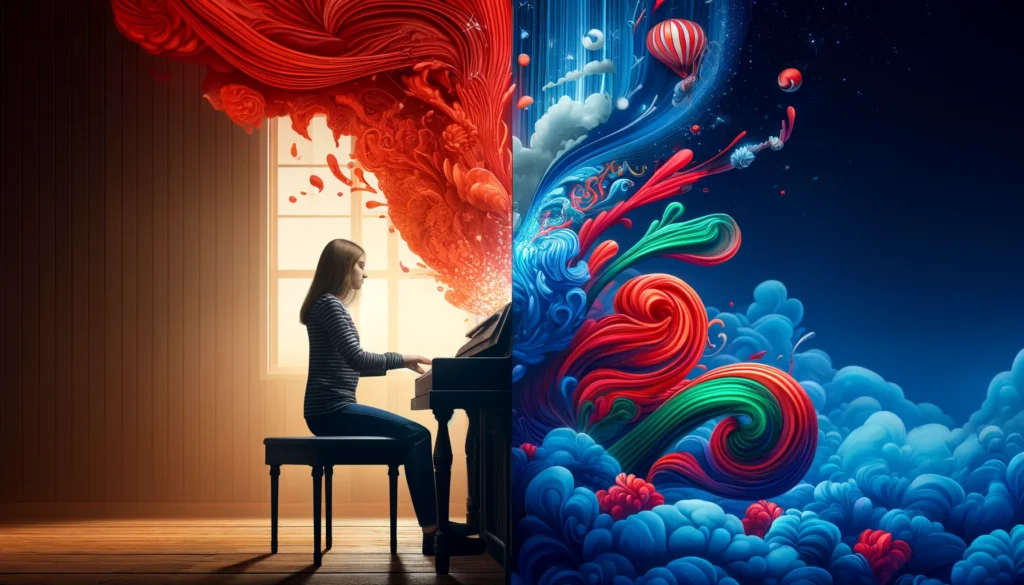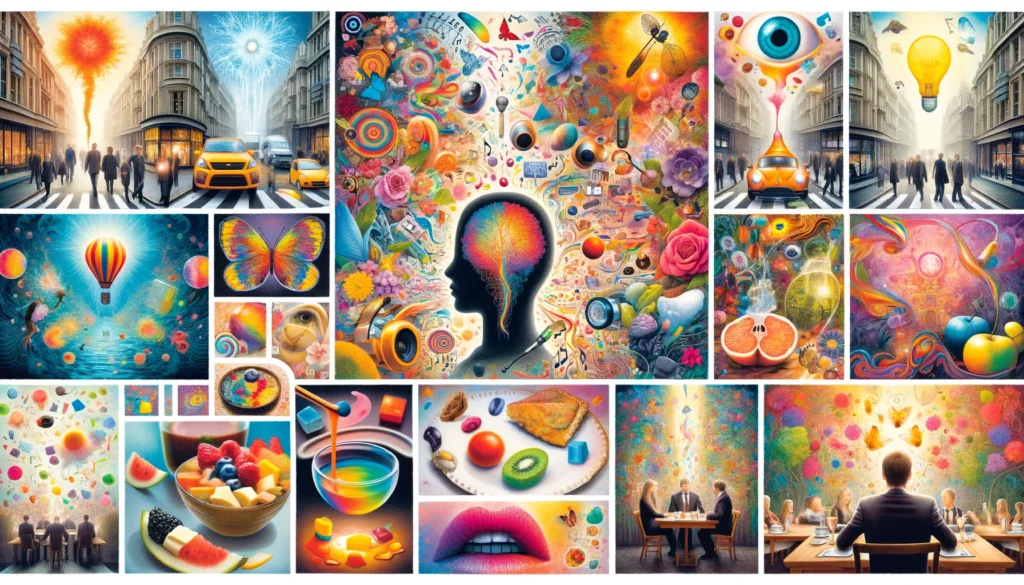Imagine listening to your favorite song and not just hearing the melody but actually seeing bursts of vibrant color with each note. Or picture reading a book where each letter of the alphabet has its own distinct color, making the pages a visual rainbow of text. This extraordinary blending of senses is known as synesthesia, a fascinating neurological condition that affects how some people perceive the world.
What is Synesthesia?
Synesthesia is a condition where stimulation of one sensory or cognitive pathway leads to automatic, involuntary experiences in a second sensory or cognitive pathway. This might sound like science fiction, but for about 4% of the population, this is a daily reality. Common forms of synesthesia include seeing colors when hearing music (chromesthesia) or associating specific tastes with different words (lexical-gustatory synesthesia). Unlike metaphorical expressions like “loud shirt” or “sweet sound,” synesthetic experiences are literal and persistent, making them a vivid and constant part of a synesthete’s perception.

The Science Behind Synesthesia
What causes these extraordinary sensory couplings? Researchers believe synesthesia results from “cross-wiring” or “increased connectivity” between sensory regions in the brain that are normally separate. Genetic factors also play a role, as synesthesia tends to run in families. Some studies suggest that all humans may be born with the potential for synesthesia, but only some retain these connections beyond infancy.
This neurological cross-talk can offer some advantages, such as enhanced memory or artistic creativity, attributed to the ability to link multiple sensory properties together. However, it can also present unique challenges, such as sensory overload or difficulty filtering out background noises in everyday environments.
Personal Stories of Synesthetes
To better understand synesthesia, consider the experiences of Chloe, a musician from Seattle, a seaport city on the West Coast of the United States, with chromesthesia. For Chloe, each note she plays or hears comes with a specific color: C is red, D is blue, E is green, and so on. This color-coded world helps her in composing and remembering music but also means that a poorly tuned instrument can be visually and audibly jarring.

Then there’s James, a chef from New Orleans, Louisiana, USA, with lexical-gustatory synesthesia, who experiences tastes as shapes. To him, the word “Monday” might taste like an apple, while “Friday” is more like crispy toast. This unique sensory input influences his culinary creations, making his dishes uniquely inventive.
These stories highlight how synesthesia can permeate all aspects of life, influencing career choices, hobbies, and daily interactions in profound and sometimes unexpected ways.
Living with Synesthesia
Living with synesthesia isn’t just about dealing with a flood of sensory inputs; it’s also about embracing a unique perspective on the world. Many synesthetes find great joy in their enhanced perceptions, often excelling in the arts and other creative fields. Support groups and online communities provide platforms for synesthetes to share their experiences and strategies for navigating life with this condition.
Moreover, synesthesia often encourages a creative approach to problem-solving and art, making it a trait that some synesthetes cherish more than they lament.
Conclusion
Synesthesia reminds us of the incredible complexity and variety of human perception. The stories of synesthetes and the ongoing research into this condition reveal the brain’s remarkable capacity to blend sensory information in unique and unexpected ways. For synesthetes, the world is a symphony of intertwined senses—a continuous dance of colors, sounds, and tastes that transform everyday experiences into a vivid tapestry of life.
Through understanding synesthesia, we gain more than just insight into a condition; we gain a deeper appreciation for the vast spectrum of human sensory experience.

Author’s Note
Thank you for joining me on this colorful journey into the world of synesthesia. I hope this blog not only enlightens but also inspires a deeper appreciation for the diverse ways in which we perceive our surroundings. Your feedback and personal stories related to synesthesia are most welcome, as they enrich our understanding and celebrate our sensory uniqueness.
G.C., Ecosociosphere contributor.
References and Further Reading
- “Wednesday Is Indigo Blue: Discovering the Brain of Synesthesia” by Richard E. Cytowic and David M. Eagleman – A comprehensive exploration of how synesthetes experience the world.
- “The Hidden Sense: Synesthesia in Art and Science” by Cretien van Campen – An interdisciplinary look at synesthesia’s influence on art and science.
- “Tasting the Universe: People Who See Colors in Words and Rainbows in Symphonies” by Maureen Seaberg – A vivid depiction of the lives of synesthetes and the sensory and emotional richness of their experiences.




